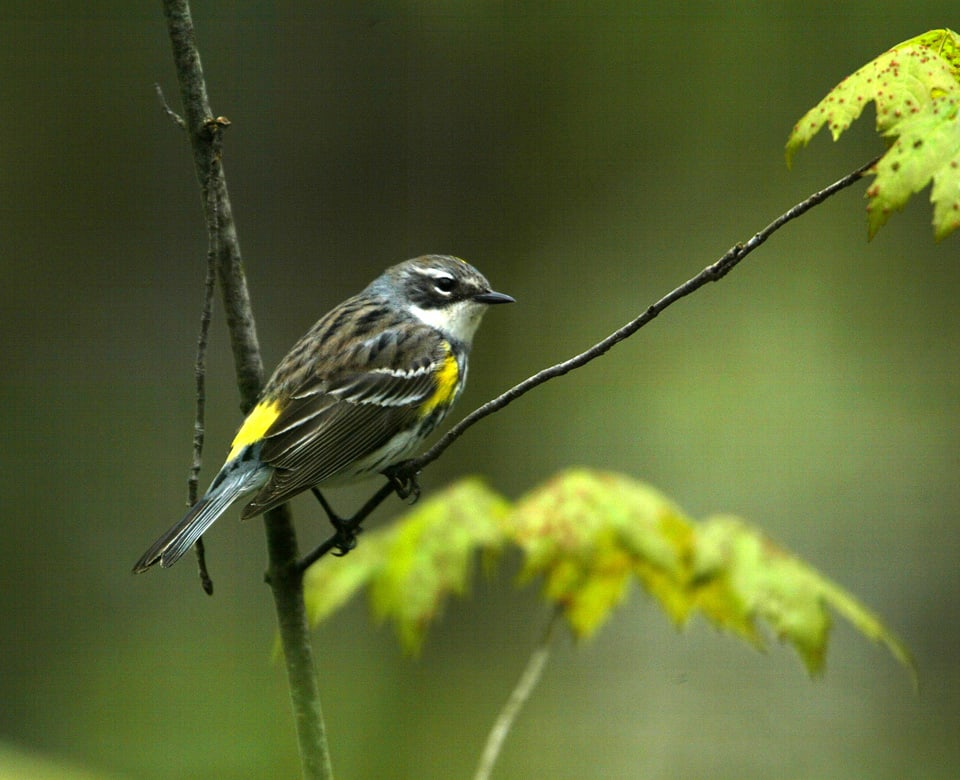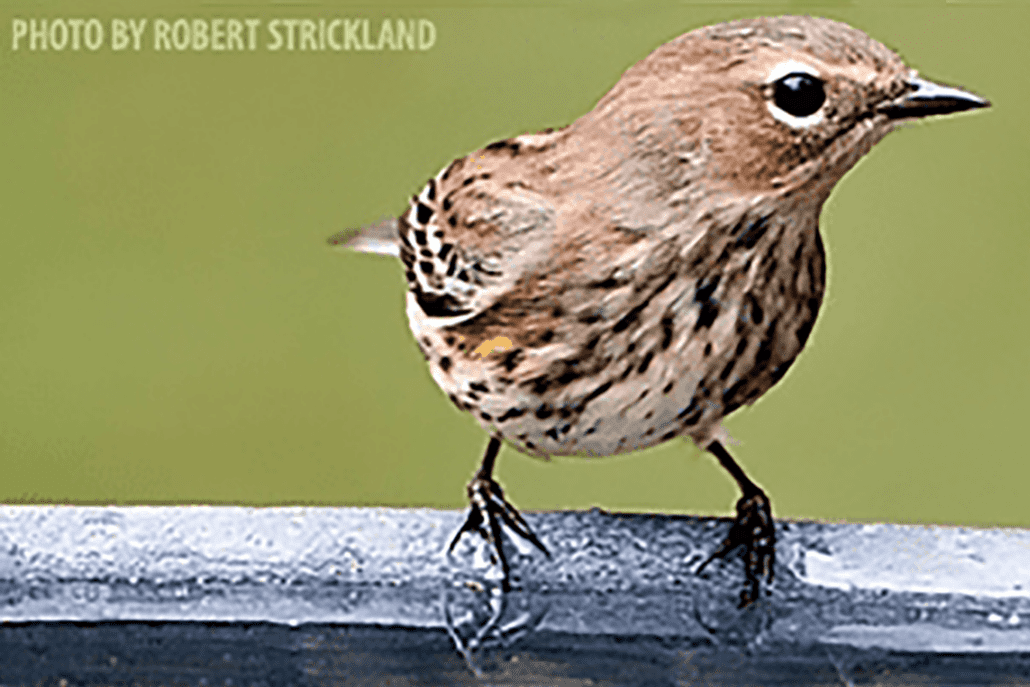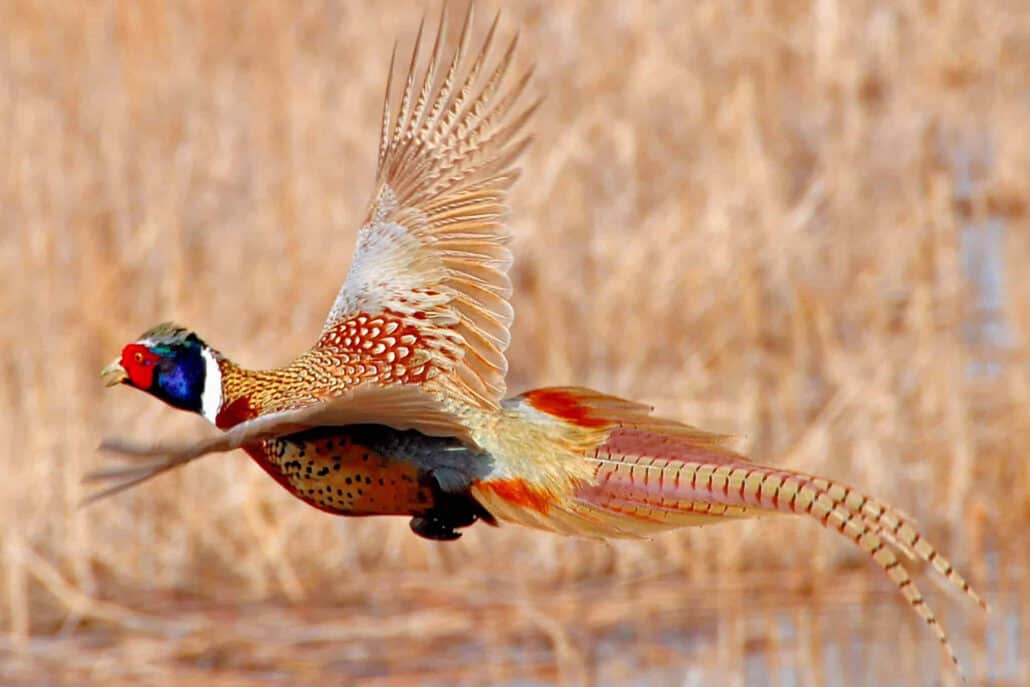Spring Birds of Illinois (March, April, May)
Spring comes to southern Illinois nearly a full month ahead of northern Illinois—while Louisiana waterthrushes are returning to breed in the southern Illinois swamplands in late March, for example, a snowy owl may still be lingering along the northern Lake Michigan shoreline in Waukegan before it returns to the tundra to breed. And while the flowering dogwoods are unfolding white blooms in the south, native shrubs in the north such as redbuds are still bare of leaves and a month and a half away from blooming. Still, no matter where you are in the state, spring migration typically begins in early March, but be aware that the migrants come through southern Illinois first, and the species you see there may not arrive into the northern part of the state until two weeks or more later.
In March, waterfowl are heading north to their breeding grounds and you can observe dozens of species of ducks on large downstate reservoirs, along the Illinois and Mississippi Rivers in northeastern Illinois wetlands, and from the Lake Michigan shoreline.
Dabbling ducks, those that tip bills into shallow waters to search for aquatic vegetation, seeds and invertebrates, include northern pintail, mallard, gadwall, northern shoveler, green-winged teal, blue-winged teal and American wigeon. Dabbling ducks have specialized bills enabling them to remove food particles from water. They also tend to have large, white wing patches. Look for them in thawed ponds, wetlands and lakes with shallow edges. The diving ducks such as common, red-breasted and hooded mergansers as well as canvasbacks and redheads, can be found on larger, deeper lakes and rivers. They dive deep to search for fish, mollusks, and aquatic plants. To become airborne, they must skitter on the water first to gain enough speed.
In March migrating sandhill cranes and raptors also begin flying over Illinois. Listen for the high rattling call of the cranes overhead on a sunny day. Meanwhile, American woodcocks are courting, finding a short patch of grass next to a woods in which to give their most incredible show. At twilight, the males utter Peent several times, then fly high into the air out of sight and then tumble back down, twittering back to where they started. Bluebirds, robins, and blackbirds are heading north; some of them will stay to breed in Illinois, while others will keep going. And spring is is the best time to see greater prairie-chickens on their booming grounds at Prairie Ridge State Natural Area as the males choose females and chase away competitors.
In April, the waterfowl continue to migrate, and the loons join them. A host of glacial lakes in northeastern Illinois attract migrating loons, which need deep, large bodies of water for feeding and for becoming airborne. Loons once nested in Illinois, but disturbance around lakes now keeps them moving northward to quieter lakes for breeding. You’ll find them statewide on large reservoirs or lakes, but a great place to observe them and perhaps hear their mysterious yodeling is the aptly named group of Loon Lakes near Antioch, Illinois.
The rails, grebes, and many early shorebirds such as least and semipalmated sandpipers are also starting to pass through in April. Go out to a good-quality wetland at dusk and you may hear the maniacal call of the pied-billed grebe or the horse-whinny song of the sora.
Sparrows of many kinds migrate through Illinois in March, April, and May—the song sparrow and fox sparrows come first, followed by swamp and vesper sparrows. Song sparrows are the most common and can be heard singing their put on the tea kettle-ettle-ettle songs in backyards and suburban parks as well as natural areas.
The swallows are returning too. Tree swallows snatch insects off lakes and wetlands and purple martins search for human-made nesting boxes. March and April also bring eastern phoebes, yellow-bellied sapsuckers, golden-crowned kinglets, brown creepers, and hermit thrushes to the woodlands.
Breeding herons and egrets return to Illinois in April. Great blue herons and double-crested cormorants are already starting to build or enhance large, bulky stick nests in their traditional nest-colony sites. Look for these groups of stick nests in the treetops near lakes and rivers.
And if you’re interested in combing the many cornfields in central Illinois, you might encounter the beautiful and rare Smith’s longspur and its more common cousin, the Lapland longspur, as they pause to rest and feed before heading north to the tundra to breed.
If you want variety and excitement, the best time to bird Illinois is in May when hoards of neotropical migrants including warblers, vireos, orioles and tanagers pass through the state, some remaining to breed. Just about anywhere you go in May where there are trees, you’re bound to find some kind of warbler, even in your backyard. The yellow-rumped warblers come first—and many are already in southern Illinois by March. Next come the palm, black-and-white, yellow and black-throated green warblers, followed by magnolia, Nashville, blackburnian and the latest migrant warblers, bay-breasted, mourning and Connecticut. Birders cover the Connecticut warbler and often find this species at Chicago’s Magic Hedge at Montrose Point along Lake Michigan in mid- to late May. On spring bird count day, the first Saturday in May, southern Illinois birders often record 32 or more species of warblers. Often they record them by song as well as sight. Each warbler has its own song, which often is buzzy rather than “warbling.” For example, the blue-winged warbler sings bee, bzzzzzzz.
They also record summer and scarlet tanagers—two migrants that return from their winter habitats in South America. Summer tanagers are much more numerous the farther south you go in Illinois. Scarlets are found statewide. In May the rose-breasted grosbeak has returned and is giving a melancholy robin-like song that fills the woods on an early morning. He is often joined by the wood thrush, which gives lilting flute-like trills, often at dusk as well as in the morning. Various vireos including the red-eyed and the warbling vireo also add to the morning chorus. And the difficult-to-identify flycatchers are back, too, including alder, willow, and least. Mid-May is also the height of shorebird migration, with many different species feasting in wetlands and along lake shores, including greater and lesser yellowlegs, stilt sandpiper, and the rarer Hudsonian godwit and whimbrel.
The grasslands come alive with song in May, too—grasshopper sparrows and Henslow’s sparrows give their insect-like songs while bobolinks offer rollicking, bubbling songs and the eastern meadowlark sings spring of the year.
As May comes to an end, most of the migrants are gone, though some linger into June. But by then many breeders are on nests, while others are starting their courtship rituals. Spring has ended, but each year, Illinois birders remember the glow of seeing 100, 120, 140, or more species of birds in a single day.




